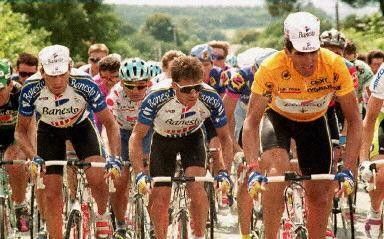I do really want to park this convo for now, I think we've made our points and we're not going to get much further without fresh data. However, I'd be gratfeul if you'd indulge me with this and talk about Giovanetti, the odd one out in the 1990 Italian renaissance given he rode for a Spanish team. Over on another thread you said this about his Vuelta victory:Fortunately, among the few cycling books that made the house move with me before lockdown was the Fallon/Bell Vuelta book. Their version of the story of that year's race is consistent with what you said. They say there was little foreign competiton and the Spanish teams managed to screw it up by keeping their aces and kings in reserve and just playing their jacks, even as the race slipped away from them. They played a cautious game and lost.
Given that he is the odd one out and that you suggest his performance can be rationalised and doesn't need EPO - and that he never really added to that one magical spring - would you be happy with removing Seur from our little list of possible pioneering teams should we return to it in the future if new info arises?
I think if you took the Vuelta as a single point, then yes EPO may not have been a factor. But then when he backs that up with 3rd at the Giro a fews later, his best result at the Giro to that point, it looks a little more suspicious and with all the other Italian results. But I am not wedged to the view he was definitely on EPO, though he does have better GT results post 1990 than pre 1990.
If he were on EPO, then to me, it would have been someone outside the team anyways. Maybe he took EPO in Italy before the Vuelta, didn't get a recharge during the race, but managed to hang on and then re-upped for the Giro. To me, Giovanetti and Ballerini are a little less suspicious than the other three from that year.
Bugno and Chiappucci we covered.
Argentin coming back to form whilst hitting up with Ferrari is highly suspect. He had been previously considered a canny rider, a Valverde type rider using his sprint and tactical nous, but from 1990 on he was more aggressive, his win at Fleche Wallone 91 was a 70k solo and his stage wins at the Tour were long solo victories. Even his win at Flanders, he bridged to the winning group solo and then away went with Dhaenans 30km from the finish to contest the win. He destroyed everyone on the Poggio in 92, but was outfoxed by Kelly.








